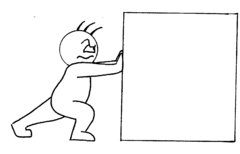AP Human Geography Chapter 3 Review – Flashcards
Unlock all answers in this set
Unlock answersquestion
Net Migration
answer
The difference between the level of immigration and the level of emigration.
question
Circulation
answer
Short-term, repetitive, or cyclical movements that occur on a regular basis.
question
Push Factors

answer
Factors causing people to leave a location.
question
Refugees
answer
People who are forced to migrate from their home country and cannot return for fear of persecution because of their race, religion, nationality, membership in a social group, or political opinion.
question
Intervening Obstacle
answer
An environmental/cultural feature that hinders migration. Ex. Rocky Mountains; Passports & Visas
question
International Migration
answer
Permanent movement from one country to another.
question
Internal Migration
answer
Permanent movement within a particular country.
question
Interregional Migration
answer
Permanent movement from one region of a country to another.
question
Interregional Migration
answer
Permanent movement from one region of a country to another.
question
Forced Migration
answer
Permanent movement compelled usually by cultural factors
question
Chain Migration
answer
Migration of people because relatives/friends previously migrated there.
question
Quotas
answer
Maximum limits on the number of people who can immigrate to a country each year.
question
Brain Drain
answer
Large-scale emigration by talented people.
question
Guest Workers
answer
Workers who migrate to MDC's from LDC's in search of higher-paying jobs.
question
Migration Transition
answer
Changes in a society because of industrialization, population growth, etc., compared to the demographic transition developed by Wilbur Zelinsky
question
In what stage is international migration significant?
answer
Stage 2 (it's crowded, not many economic opportunities)
question
In what stage is internal migration significant?
answer
Stage 3/4
question
Why do people in stage 2 countries internationally migrate?
answer
Crowded & not many economic opportunities
question
Stage 2
answer
High international emigration & interregional migration from rural to urban areas
question
Stage 3 & 4
answer
High international immigration & intraregional migration from cities to suburbs
question
Main points about distance migrants (Laws of Migration)
answer
Most migrants relocate a short distance within the same country. Long-distance migrants move to major centers of economic activity (Japan -> Tokyo)
question
Main points about gender & family-status patterns (Laws of Migration)
answer
Most long-distance migrants are male and travel as individuals
question
Other points made by Ravenstein
answer
Rural dwellers migrate more than urban dwellers, females migrate more within & males internationally, every migration has a counter-migration
question
Types of international migration
answer
Voluntary & Forced
question
Voluntary migration
answer
Choosing to migrate, ESPECIALLY for economic development.
question
Forced Migration
answer
Migrants compelled to move, ESPECIALLY by political & environmental factors.
question
Political factors are also called
answer
Cultural Factors
question
Voluntary Migration follows what concept
answer
Distance Decay (Functional Regions)
question
Interregional Migration
answer
Migration from one region to another (Most commonly rural -> urban; Dramatic change)
question
Intraregional Migration
answer
Movement within one region
question
Intra
answer
Within
question
Inter
answer
Dramatic Change
question
Which countries have net-out migration
answer
Asia, Latin America, Africa
question
Which countries have net-in migration
answer
Anglo-America, Europe, and Oceania
question
U.S. Immigration Pattern in the First Peak
answer
1840s, 1850s, and 1870s: Ireland & Germany (immigrants came from these countries)
question
U.S. Immigration in the early 21st century
answer
1960s-1980s: Asia. 1990s-Present: Latin America
question
Who developed the World-Systems Theory & Model?
answer
Immanuel Wallerstein
question
Who developed the Laws of Migration?
answer
E.G. Ravenstein
question
What is the 3-tier structure?
answer
Core, Semi-periphery, Periphery
question
Core
answer
MDC's Ex. America
question
Periphery
answer
LDC's Ex. Nigeria
question
Semi-Periphery
answer
A little better LDC. Ex. Mexico, Core: North, Periphery: South. Soviet Block, China, India, Southwest Asia, South Africa, Brazil.
question
Gravity Model
answer
The larger the population, the more pull you have. Directly related to size/population & indirectly related to distance.
question
Who developed Migration Transition?
answer
Wilbur Zelinsky
question
Who developed the reasons for push & pull factors?
answer
Everett Lee
question
3 reasons for migrating
answer
Economic, political (cultural) and environmental. The #1 reason is economic.
question
#1 Push Factor
answer
Political
question
#1 Pull factor
answer
Econoimc
question
Political Pull Factors
answer
Opportunity for freedom
question
Political Push Factors
answer
Slavery & Political Instability (Unstable government)
question
Internally Displaced Person (IDP)
answer
People forced to migrate for reasons like refugees, but don't migrate internationally.
question
Asylum Seeker
answer
People hoping to be recognized as refugees
question
Largest groups of refugees
answer
Iraq & Afghanistan
question
Largest groups of IDP's
answer
Columbia & Sudan
question
Environmental Pull Factors
answer
Attractive environments (Rare)
question
Environmental Push Factors
answer
Natural disasters
question
Floodplain
answer
A area subject to flooding during a given number of years (Environmental Push Factors)
question
Economic Pull Factors
answer
More job opportunities
question
Economic Push Factors
answer
New job openings elsewhere & Downturns in the economy
question
Why does Europe attract immigrants?
answer
14/16 countries have the highest per capita income
question
How do immigrants help their home country?
answer
Reduce unemployment, money is sent back to stimulate the economy - migration remittances
question
Migration Selectivity
answer
Combination of factors (age, gender, education) that predict a person's likelihood to migrate.
question
Fortified Barrier
answer
Human built barriers. Ex. DMZ in Korea
question
Intervening Opportunity
answer
Finding a better opportunity to settle in before reaching the destination.
question
1700s of U.S. Migration (Center of Population)
answer
1790: Hugging the coast because we lacked infrastructure, depended on shipping links, and were blocked by the Appalachian Mountains & Native Americans.
question
U.S. Migration in 19th century (Center of Population)
answer
1800-1840: Crossed the Appalachians because of the erie canal and cheap land. 1850-1890: People migrated to the west because of the Gold Rush. Great plains were passed because of physical environmental reasons.
question
U.S. Migration in recent years (Center of Population)
answer
Interregional migration has slowed. Recent southern & western movement for job opportunities and to escape the city life.
question
Soviet Union - Forced & Voluntary Migration
answer
Forced: The government forced people to migrate north for factory production near raw materials. Voluntary: The government encouraged people to migrate with higher wages and earlier retirement.
question
Brazil
answer
Brasilia became a forward capital to encourage interregional migration since Brazil's interior was sparse and the coasts were heavily populated.
question
Forward Capital
answer
Capital being moved for a purpose.
question
African-American Migration
answer
From the south to the northern cities
question
Step migration
answer
Migration in which a long-distance relocation is undertaken in stages. (Farm village -> Village -> Small town -> City)
question
Suburbanization
answer
Intraregional migration from cities to suburbs for lifestyle changes. Farm areas are converted to housing areas, meaning more infrastructure.
question
Counterurbanization
answer
Net migration from urban to rural areas. (More for elderly people)
question
Guest Worker Migration
answer
Southwest Asia (oil): India, Pakistan, Philippines. Northern Europe: Eastern & Southern Europe, North Africa, Middle East, and Asia
question
Changes of Quotas
answer
1920 Quotas accepted mostly European immigrants and now globally accepts immigrants.
question
Quota Preferences
answer
Family Reunification, Skilled Workers, Diversity
question
Current U.S. trends regarding interregional & intraregional migration
answer
Interregional: Slowed since recession (2008). Intraregional: Urban to rural, counterurbanization
question
Sub-Saharan Migration
answer
Emigration because of ethnic conflict
question
Colonial Era of U.S. Migration
answer
Voluntary: British. Forced: Sub-saharan Africa; slavery
question
Southeast Migration
answer
Emigration from Southeast Asia because of the Vietnam War
question
Transhumance
answer
Seasonal migration of livestock between highland & lowland.
question
Rust Belt
answer
Northern industrial states - Ohio, Michigan, Pennsylvania - in the U.S. were left to rust because of attractive economic activity elsewhere.
question
Sun Belt
answer
Southeastern & Southwest states that grew dramatically since WWII.
question
Place Utility
answer
Perception of opportunities & attractiveness of a place (Like an anime artist would wanna go to Japan)



